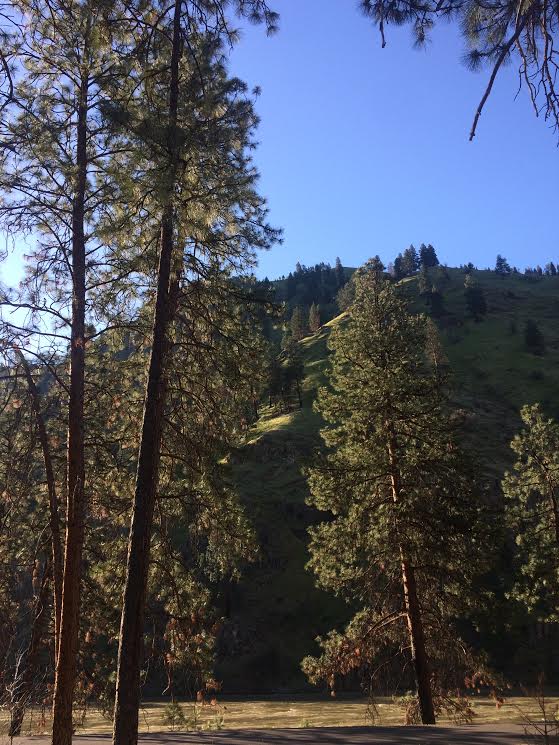
Photo credit: Emily Waters
The 1990s was a contentious time for Pacific Northwest forests. Decades of conflict over old-growth trees, industry, and endangered species reached a head in the creation of the Northwest Forest Plan (NWFP) in 1994. The NWFP applies throughout the Pacific Northwest, encompassing 24.5 million acres in Washington, Oregon and California on the westside of the Cascades. Now, these protections are once again in the limelight as the Forest Service contemplates changes to the ‘Eastside Screens’.
Recognizing the forests east of the Cascades are ecologically different from their Westside counterparts, in 1993 the Clinton administration instructed the United States Forest Service (USFS) and Bureau of Land Management (BLM) to make a plan for a “scientifically sound and ecosystem based” management strategy for Eastside forests. As a result, the USFS and BLM adopted and implemented a management strategy known as the Eastside Screens, which has remained in place since 1994.
The Eastside Screens applies to all timber sales East of the Cascade crest. It prohibits all Late-Successional Old Growth (LSOG) logging and aims to incorporate riparian, ecosystem and wildlife standards in the development of timber sales. Perhaps the most well-known requirement of the Eastside Screens is the 21-inch Rule. Simply put, the 21-inch rule prohibits the logging of live trees that are 21 inches or greater in diameter at breast-height (DBH). It is important to note that this rule stems from the wildlife standards because it indicates the unique habitat provided by old growth trees.
However, the Eastside Screens regulations were only intended to be temporary until a comprehensive, long-term strategy could be adopted. While the 21-inch rule undoubtedly preserved many old-growth trees, there is concern among both conservation and industry groups that a one-size-fits-all approach could be doing more harm than good.
For instance, Grand fir, while a native species, have outpaced the growth of Ponderosa pines, changing the structure of the forests. Because they are shade-tolerant and grow quickly, many of these Grand fir are larger than 21 inches DBH and therefore cannot be logged. Additionally, Eastside forests evolved with regular exposure to low-intensity wildfires. These fires cleared out the understory, creating much more open forests than those we see on the Westside. Denser forest stands can heighten wildfire risks to Eastside pine forests, as it increases fuel density and provides opportunity for fire to climb higher into the canopy.
On the other hand, large, old-growth trees provide many benefits to the ecosystem, regardless of whether they are fir or pine. This is especially true in areas where endangered Northern Spotted Owls and other old-growth dependent species are present. It is important to note that because no long-term strategy was ever fully adopted for Eastside forests, the 21 inch rule is the most significant protection for Eastside old-growth trees. As such, changes to the rule should not be taken lightly.
There have been increasing calls for a revision of the Eastside Screens from a variety of sources over the years. This spring, the USFS announced its intention to consider amendments to the 21-inch rule, citing a changing understanding of forest management in areas that have frequent disturbances, such as wildfire. A series of general information sessions will be announced in-lieu of in-person public meetings. More information about these information sessions and the amendment process can be found here. The USFS plans to issue a formal decision on whether to amend the Eastside Screens by spring of 2021.
While it is not known what the USFS’ recommended changes to the eastside screens might be, the conservation community should remain vigilant against the further rollback of forest protections under the Trump administration.
-Emily Waters
Executive Committee of the Loo Wit Group; Member of the WA State National Forest Committee